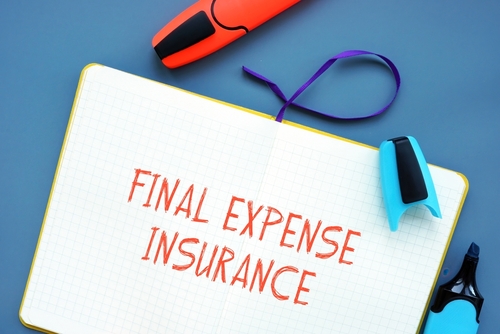Getting My Pacific Prime To Work
Getting My Pacific Prime To Work
Blog Article
An Unbiased View of Pacific Prime
Table of ContentsGet This Report on Pacific PrimeAn Unbiased View of Pacific PrimeThe Ultimate Guide To Pacific PrimePacific Prime for DummiesThe Definitive Guide for Pacific Prime

This is due to the fact that the data were accumulated for a period of strong financial efficiency. Of the estimated 42 million individuals who were uninsured, almost about 420,000 (concerning 1 percent) were under 65 years of age, the age at which most Americans end up being qualified for Medicare; 32 million were grownups between ages 18 and 65, about 19 percent of all grownups in this age; and 10 million were children under 18 years of age, regarding 13.9 percent of all youngsters (Mills, 2000).
These estimates of the number of individuals without insurance are generated from the yearly March Supplement to the Existing Population Study (CPS), conducted by the Demographics Bureau. Unless otherwise kept in mind, national price quotes of individuals without medical insurance and proportions of the population with different sort of protection are based on the CPS, the most commonly utilized resource of quotes of insurance policy protection and uninsurance prices.
Getting My Pacific Prime To Work

Still, the CPS is particularly helpful because it generates yearly price quotes fairly rapidly, reporting the previous year's insurance protection estimates each September, and because it is the basis for a regular collection of estimates for more than two decades, permitting analysis of fads in protection gradually. For these reasons, as well as the extensive use the CPS in various other research studies of insurance protection that are presented in this report, we rely upon CPS estimates, with constraints kept in mind.

The quote of the number of without insurance individuals expands when a populace's insurance coverage status is tracked for numerous years. Over a three-year period starting early in 1993, 72 million people, 29 percent of the united state population, were without insurance coverage for at the very least one month. Within a single year (1994 ), 53 million people experienced a minimum of a month without coverage (Bennefield, 1998a)
Six out of every 10 uninsured grownups are themselves utilized. Functioning does improve the chance that one and one's household participants will have insurance, it is not an assurance. Even members of families with 2 full-time breadwinner have nearly a one-in-ten possibility of being uninsured (9.1 percent without insurance rate) (Hoffman and Pohl, 2000).
What Does Pacific Prime Do?
New immigrants account for a substantial percentage of individuals without wellness insurance policy. One analysis has attributed a significant portion of the current growth in the dimension of the U.S. without insurance population to immigrants that showed up in the nation between 1994 and 1998 (Camarota and Edwards, 2000). Current immigrants (those that concerned the USA within the past four years) do have a high price of being without insurance (46 percent), but they and their kids make up just 6 percent of those without insurance nationally (Holahan et al., 2001).
The relationship in between wellness insurance and access to care is well developed, as documented later on in this chapter. The partnership in between health insurance and health outcomes is neither straight neither straightforward, an extensive medical and health solutions study literary works links health and wellness insurance coverage to improved access to care, better top quality, and improved personal and population health standing.
Degrees of analysis for analyzing the results of uninsurance. This conversation of medical insurance coverage concentrates mostly on the united state populace under age 65 due to the fact that virtually all Americans 65 and older have Medicare or various other public protection. Furthermore, it concentrates particularly on those without any medical insurance for any size of time.
10 Simple Techniques For Pacific Prime
The troubles faced by the underinsured are in some aspects similar to those faced by the uninsured, although they read what he said are typically less serious. group insurance plans. Uninsurance and underinsurance, nonetheless, entail clearly various plan problems, and the methods for addressing them may differ. Throughout this study and the 5 records to comply with, the main focus is on individuals without any medical insurance and thus no assistance in paying for wellness treatment beyond what is readily available via charity and safeguard institutions
Health insurance policy is an effective element affecting invoice of treatment due to the fact that both clients and doctors reply to the out-of-pocket rate of services - https://href.li/?https://www.pacificprime.com/. Health and wellness insurance, nevertheless, is neither necessary nor enough to access to clinical services. The independent and straight impact of health insurance policy coverage on accessibility to wellness solutions is well established.
Others will certainly get the healthcare they require even without medical insurance, by spending for it expense or seeking it from suppliers that provide treatment totally free or at very subsidized prices. For still others, health insurance coverage alone does not make certain receipt of care due to other nonfinancial barriers, such as a lack of healthcare companies in their area, limited access to transportation, illiteracy, or etymological and social differences.
What Does Pacific Prime Do?
Official study concerning without insurance populaces in the United States dates to the late 1920s and early 1930s when the Committee on the Expense of Medical Care created a collection of records concerning funding physician workplace visits and hospital stays. This concern became salient as the varieties of clinically indigent climbed up throughout the Great Clinical depression.
Report this page